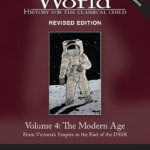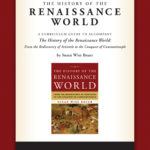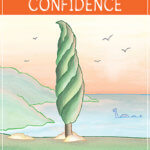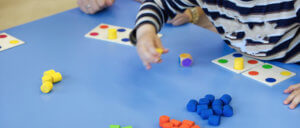
As classical education has become more popular, classical schools and websites have sprung up across the United States (and Canada, too!). Yet classical schools and online recommendations, while agreeing on the basics of trivium learning, differ from each other in the practical application of this classical pattern to learning. And our recommendations in The Well-Trained Mind are no different. We suggest that the grammar stage occupies grades 1-4, the logic stage grades 5-8, and the rhetoric stage grades 9-12; other classical curricula seem to see the early grades as “pre-grammar” learning and begin grammar-stage learning in grade 3 or later. We’ve seen several arrangements of this system: one school labels the grammar stage as grades 3- 6, the logic stage as grades 7-8, and the rhetoric stage as grades 9-12; another classical curriculum puts the grammar stage even later, around grade 4, locates the logic stage as beginning around sixth grade, and moves on the study of rhetoric in tenth grade. Infinite variations of this pattern seem to exist! The chronological study of history, which we suggest as “ideal,” is no different. Some classical programs follow a “sequential” history pattern, in which the history of a particular country or culture is mastered before the introduction of the next culture, even if the histories under study are taking place at the same time; some curricula are sequential in the early stages and chronological in the later stages; some are sequential all the way through.
In home schooling, the division of the stages of learning is flexible; home schooling is parent-directed education, so you ought to feel free to adjust your teaching style to your child’s strengths and weaknesses. But to do this, you need a clear understanding of why the stages of learning are divided the way they are, and why the chronological study of history is important.
Try to keep these central objectives in mind: The grammar stage is a time to build basic skills in language arts (reading skills, writing skills, grammar, spelling) and arithmetic. In the content areas of history, science, literature, foreign languages, art, and music, your goal is familiarity and enjoyment, not complete mastery. You want the child to develop an interest in these subjects and to be familiar with important events and concepts. During the logic stage, you are aiming for initial mastery; that is, the child should be developing a sense of the “big picture,” or how different concepts and events link together in a larger pattern. And during the rhetoric stage, your goal is to teach the student how to think through ideas and express his or her own opinion about them. Until a student is familiar with history and enjoys it, he can’t move on to the logic stage of critical reflection on how familiar historical events might fit together. And until he has a grasp of the relationship between historical events and historical cultures, he can’t form an opinion on (for example) Josephus’s record of the wars between the Romans and the Jews, or Plato’s theories about the beautiful and the ideal.
These central objectives shape the way that we have applied the stages of learning to education. We suggest that the grammar stage begins in first grade, earlier than some other curricula and schools because we feel that first and second grade children are capable of doing more than simply building basic math and reading skills. These skills are certainly important. But young children can also begin to develop familiarity and enjoyment with history, literature, and science. In the early grammar stage, you may not always get to the study of history and science every day (or even every week). But thinking of grades 1-3 as grammar-stage years will help you to encourage young children towards the exploration of history, science, art, music, and literature in a way that will lay the foundation for their logic-stage work.
We feel that the logic stage is most effective when it occupies an entire four-year segment of education. In many ways, this is the most challenging time in a child’s education. The brain is undergoing great development and a major shift in the way that material is understood. Observation tells us that this shift (displayed by an increasing impatience with rote memorization and a growing capacity to understand the whys behind principles and rules) generally takes place in late fourth grade/early fifth grade. It is true that the reasoning capacity takes some time to mature, which is why many classical programs locate the logic stage in grade 6 or later. But this delay in the logic stage, while appropriate for some children, has the potential to frustrate many others who are ready to begin critical thinking earlier. And in practical terms, it takes time to teach children to think analytically. A two-year logic stage simply doesn’t allow the child’s mind sufficient time to complete this learning shift. A two-year logic stage gives just enough time to complete a two-year logic course, for example; the four-year logic stage that we suggest gives you a “transition year” in which you can introduce the child to critical thinking skills, two years for the formal logic course, and a “follow up” year during which you can use the various resources we recommend to apply the newly-learned logic skills to the subject areas. In our opinion, you should think of the logic stage as occupying at least three years.
There is less disagreement over the beginning of the rhetoric stage, which most classical programs begin in ninth or tenth grade. The primary concern here is a practical one: how long will it take the student to read through a Great Books list? If the student is mature enough to begin this reading in ninth grade, then a four-year rhetoric stage is preferable; the Great Books list is very long and difficult, and three years is a very short time in which to cover a range of titles from Plato to T. S. Eliot!
This consideration of how long it takes to progress from ancient to modern times also shapes our division of classical education into three four-year stages. We feel strongly that the most productive way to study history is not sequentially, by civilization (first the Egyptians, then the Greeks, then the Romans…) but rather by chronology; you study the years 3000-2000 BC across the globe, finding out what’s going on in each civilization at this time, before progressing on to 2000-1800 BC, 1800-1600 BC, and so on.
Many history curricula are set up for sequential, civilization-centered study. There are advantages to this method; it does allow the child to easily grasp what happens in a particular civilization, from its roots to its fall. But given the choice, we still prefer chronological study. Sequential, civilization-centered study is certainly coherent but it also obscures the similarities between cultures. For example, a typical elementary-age curriculum might cover Mesopotamia, then Egypt, then (much later) Europe. A child can learn about all three cultures without ever realizing that Mesopotamian, Egyptian, and European cultures all built big monuments at roughly the same time in history: Sumerian ziggurats, the Egyptian pyramids, and the stone megaliths and stone circles of Europe. A child who learns chronologically is much more likely to remember the dates and purposes of these monuments, because he’s encountered them three times in three different cultures all during the same time period. Other examples abound: the progression from farming to walled villages, from walled villages to city-states, and then from city-states to empires takes place in roughly the same time period across the globe; burying servants and pet animals in graves to accompany noblemen and women into the afterlife takes place in Egypt, Sumer, and Anatolia all around the same time; different types of picture writing appear simultaneously in different cultures. These connections aid the child’s memory.
Chronological study also makes the teaching of history easier, since civilizations are always visiting each other and borrowing from each other. Consider doing ancient history sequentially, or “by civilization” you will find yourself explaining that in the New Kingdom the Egyptians were fighting the Assyrians for possession of Mesopotamian real estate, but since you haven’t ever talked about the Assyrians or where they live, this information is apt to leave the child’s mind as soon as it enters. (Anyway, what are the Egyptians doing in Mesopotamia? That was another unit.) Chronological study opens the child’s eyes to the relationships between different civilizations.
Finally, doing a chronological study improves a child’s geography. Civilization study tends to do one area of the map at a time, so that students have difficulty understanding (for example) the relationship between the Nile Valley and Greece. More importantly, it may never occur to the student that someone might travel from the Nile Valley to Greece and back again, carrying customs and ideas with them. Sequential study, on the other hand, tends to impress on the child’s mind the idea that civilizations are discrete and separate units that don’t interact with each other (unless they’re fighting a war).
Given the value of chronological study, then, the four-year repetitive pattern makes sense. It is difficult to study all the way from ancient times up to the present in under four years; this is particularly true in the middle and upper grades, when the child is completing a lengthy program of readings to go along with the study of history. “Sailing” through history in two or three years is a difficult project, and we think there’s value in going through history once at each level (particularly in the logic and rhetoric stage levels), each time concentrating on a different aspect of learning: familiarity, then chronological and logical relationships, and finally interactiong with ideas.
This is why our Great Books list for high school covers four years. We’ve seen three-year lists and five-year lists; one classical curriculum does the progression of history once in grades 1-6 and again in grades 7-12. But we feel that a student should go all the way through the progression of history at the highest level (high school), using original readings (Plato, Aristotle, Josephus, etc.) Beginning ancient history in grade 7 or 8 means that a student encounters some of the most technically difficult literature on the list at a younger age, when many students are not yet quite mature enough to put the necessary effort into reading it. We find that students who encounter ancient literature in ninth grade are more likely to understand the ideas presented and to persevere through unfamiliar forms of expression without giving up.
In the end, you should feel free to adjust any educator’s classical pattern to fit your child. You should decide whether to begin the grammar and logic stages later, the rhetoric stage earlier, and whether to do sequential or chronological study. There may be good reasons for concentrating on American history for a year, or for delaying logic study (or beginning it earlier). But understanding the reasons why we’ve suggested the patterns that we do can help you make up your mind about what is best for your own family.
Go to our article Getting Started
Recommended Products
-
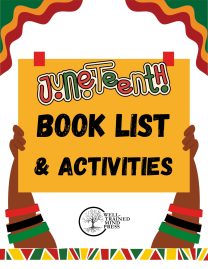
Juneteenth Booklist & Activities
0 out of 5$0.00 Add to cart -
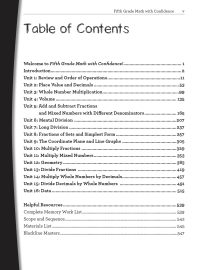
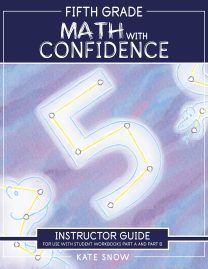
Fifth Grade Math with Confidence Instructor Guide
0 out of 5Starting at:$36.95Original price was: $36.95.$27.71Current price is: $27.71. Select options -
Sale!

Hansel & Gretel and Other Stories: Downloadable MP3
0 out of 5$12.95Original price was: $12.95.$8.42Current price is: $8.42. Add to cart -
Sale!

Dorothy and the Wizard in Oz: Downloadable MP3
0 out of 5$25.95Original price was: $25.95.$16.87Current price is: $16.87. Add to cart -
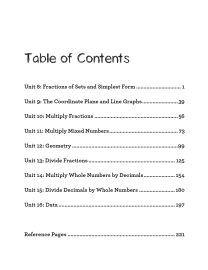 Sale!
Sale!
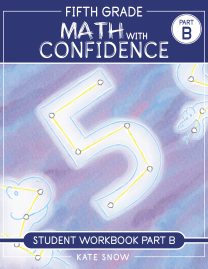
Fifth Grade Math with Confidence Student Workbook B
0 out of 5$16.46 – $21.56 Select options This product has multiple variants. The options may be chosen on the product page -
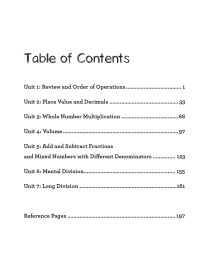 Sale!
Sale!
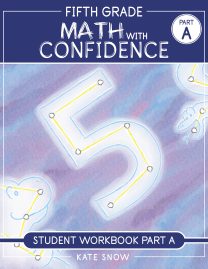
Fifth Grade Math with Confidence Student Workbook A
0 out of 5$16.46 – $21.56 Select options This product has multiple variants. The options may be chosen on the product page
ABOUT THE AUTHOR
Susan Wise Bauer
Join over 100,000 homeschooling families
For the latest offers, educational insights, products and more.
By joining you agree to our privacy policy.



